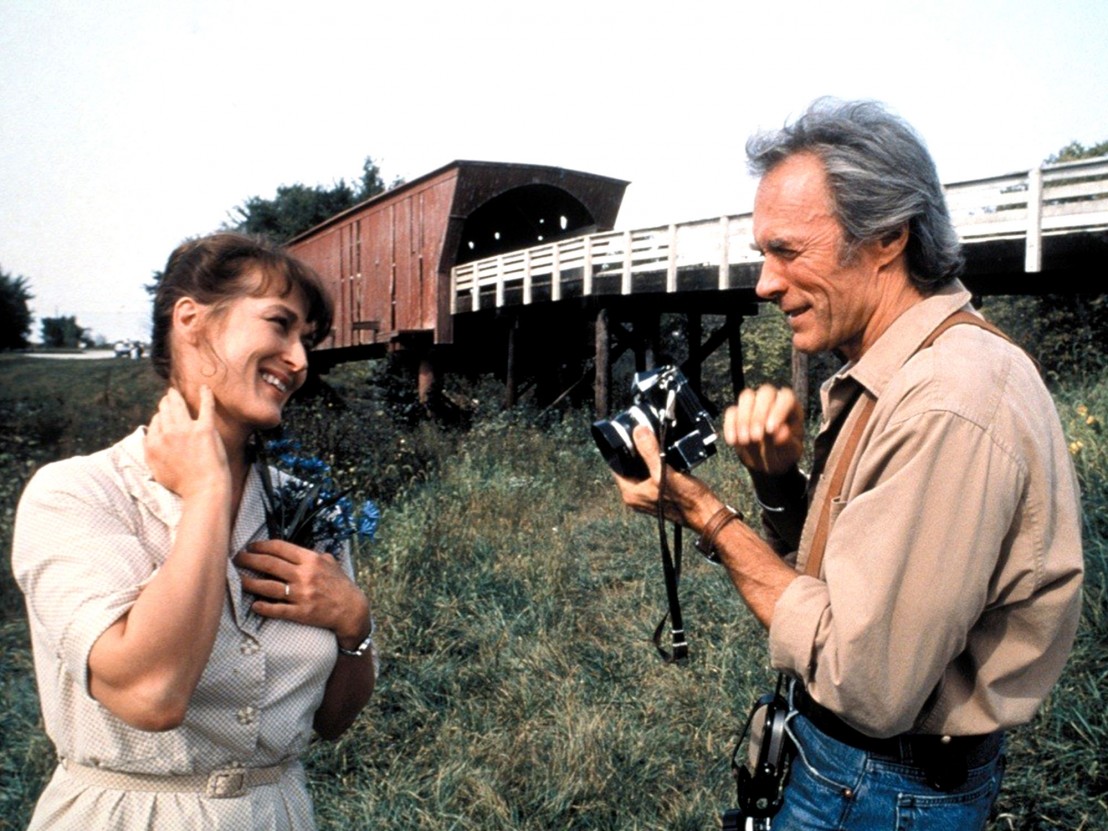
At the time of writing, Clint Eastwood is 86 years old. Take a moment to think about that. Eighty. Six. His latest, Sully, is the 14th film he’s directed after the age of 70. It tells the story of the so-called “Miracle on the Hudson” and the safe landing of a passenger jet that had been downed by a bird attack. It’s already been deemed a box office hit in the US. Glancing back, Eastwood boasts a surprisingly diverse directorial portfolio, seemingly trying his hand at anything and everything going, often with great success. His signature classical style remains a constant, as does the idea that his films are about people learning morals, but are not themselves moralistic. On the occasion of his new work, and to make your day, we’ve ranked all 35 of Big Clint’s directorial features for your pleasure. Got a personal favourite? Let us know @LWLies.
They say that Hell is other people, but “they” have clearly never sat through the droning blue-grey wibble that is the seven-gallon Clintus clunker, Hereafter. Based on arguably the worst script ever written in the history of the nickelodeon (by serial bad scriptwriter, Peter Morgan), the film serves up three unlikely heroes, each of whom have a brush with death. It then reveals how they all magically connect… at a book expo in Alexandra Place which boasts a tipsy Derek Jacobi as the headliner. Matt Damon, who clearly has no idea what’s happening or why he signed on to this thing, sleepwalks through his role as a hotshot spirit medium who has become so emotionally affected by his work that he takes up – wait for it! – cookery classes run by a roly-poly Italian stereotype. Throw in some very distasteful disaster porn sequences and lots of po-faced, “deep” conversations about life and existence, and you’ve nearly got a taste at how shatteringly dull this thing is. It’s the kind of film you’d imagine M Night Shyamalan glancing a beady eye over and thinking, ‘nah…’ Produced by Steven Spielberg. David Jenkins
Picture the scene – Clint is sat, mad as hell, in an airless corporate boardroom. His rhinestone-studded cowboy boots propped up on the marble-laminate table, and some toadying shit-heel is explaining the vital demographic needs of early ’90s cinema audiences. “We need soulless Hispanic villains, muscle car smash-ups, shoot-outs on airport tarmac, dive bar scuffles, sex on office chairs, and Tom Cruise. And if we can’t get Cruise, get Charlie Sheen.” Everyone has their off days, and 1990’s The Rookie comes across as a movie that its maker gave up on half way through. Sheen shoots for moody and low-key but hits total charisma air-lock, making you hope and pray that mob-backed carjackers Raul Julia and Sonia Braga hurry up and slot him with their arsenal of oversized automatic weapons. It’s a film that feels like its maker is giving his audience what he thinks they want, and what he thinks they want is bubble-headed condescension, macho dick waving and antique motorbikes. DJ
As Oliver Stone proved with his lavish, star-studded, epically dull biography of Richard Nixon, an eventful, fascinating life spent in high office doesn’t necessarily translate into on-screen dynamite. Even more deskbound than Stone’s film, J Edgar is a pen-pusher’s delight, as Hoover introduces library systems, sets up crime labs and pioneers fingerprinting in an attempt at keeping the nascent FBI one step ahead of the crims. Alas, the results of all this toil go largely unseen. No-one’s expecting to see flashbulb raids and running gun battles, but a few examples of how Hoover’s work was affecting the spotty face of America would supply a more robust context for his motivations. Instead Clint sticks too close to his man, a technique which proves smothering rather than intimate. Adam Lee Davies
This film boasts an agreeably salty script based almost entirely around asses, butts, fuzzbutts, skunk stool, shit, antique shit, haemorrhoids and “using your face as a bicycle seat”. Yet it’s the only thing keeping this poorly conceived and shoddily executed gung ho-ho blunder, based on the 1983 US invasion of Granada, from the very bottom of Clint’s famously long barrel. This – shall we say – ‘modest’ military engagement is, however, merely the rich tapestry against which Eastwood’s napalm-throated Sergeant Major kicks, chews and pounds the asses of a stock platoon of goofy, good-time Marines who make the cast of Saved by the Bell look like The Wild Bunch. The point-and-shoot direction gives everything the feel of a lacklustre TV show and Clint’s performance is almost suffocated by the squinty ‘mock surprise’ double-take affectation that passed for his acting style back in the day. ALD
Direct from the provincial airport bookshop to our screens, Blood Work is a contemporary, noir-inflected murder mystery with a twist: its hero lives on a boat. Yes, that’s right kids, in order to sex up the boilerplate, Clint has his unusually dogged FBI man forced to opt for a lifestyle of intense, seabound relaxation after suffering a near-fatal heart attack. Perhaps the material possessed a certain resonance with the ageing auteur, particularly the hammy, unnecessary detail that his replacement ticker has been sourced from a female murder victim – making his mission to track down the culprit one of high patriarchal import. Like many of Clint’s middlebrow genre efforts, there’s always an understated classiness to the direction, and no hint of self-reflexive irony to be seen. Yet, the eventual revelation of the killer’s identity will have you palming your face so hard you’d do well to have your chiropractor on speed dial. DJ
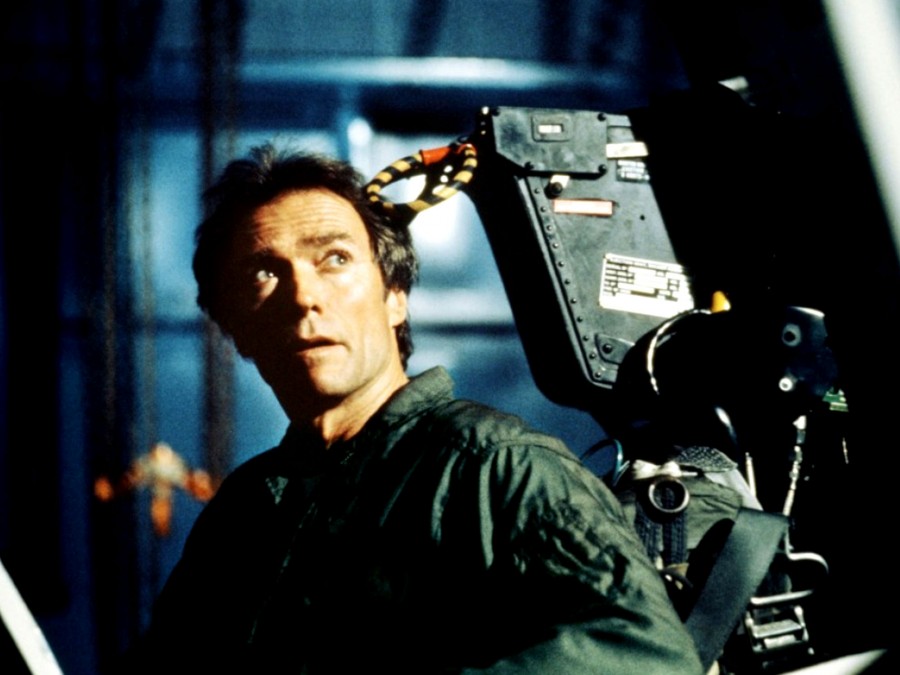
Positioned as The Hunt for Red October for the ZX Spectrum set, Clint’s post-Star Wars foray into ‘scienced fiction’ features scads of Cold War intrigue, the theft of a futuristic, thought-controlled super-jet, a series of cunning disguises and a hefty wodge of cutting edge visual effects. It is also chronically lethargic, characterless, mechanically scripted, lumpen and almost completely devoid of spills. But where the film really comes unstuck is during its aerial combat sequences, as Clint discovers that filming gunfights is no training for filming dogfights. Confusing, lengthy, repetitive and occasionally bizarre, these scenes betray no directorial hand whatsoever, while the actual effects themselves are – to borrow a technical term – crummy. ALD
In no way timed to coincide with Clint’s successful campaign to become mayor of Carmel, a picturesque town on the southern shores of Monterey Bay, Dirty Harry pt. IV – or Inspector Callahan’s Summer Vacation – sees everyone’s favourite renegade cop/unhinged Nazi relocate from his native San Francisco to blow away the punks, toughs and hoods of Santa Cruz, a picturesque town on the northern shores of Monterey Bay. This time the guns are bigger, the kiss-offs catchier, the street-trash trashier and the violence queasier. Clint’s direction keeps the flavour of the series intact, but the overbaked plotting, comfy seaside locations, routine baddies and the parodic carousel finale make Sudden Impact feel like an especially bloodthirsty episode of Murder, She Wrote. No matter. Harry was back, Reagan was in the White House, everybody was dead and the film was a huge hit. Times were good. ALD
The second film in what some film historians are already calling Clint’s ‘Millennial Procedural Triptych’, True Crime remains, for many, forever jumbled together with memories of Absolute Power and Blood Work. From their titles on down, all three are all plodding, sturdy, reassuringly unimaginative slabs of serviceable entertainment that are difficult to tell apart. This is the one where he’s a journalist – a washed up, crusading, ornery, alky, beat-the-clock journalist. But while there’s nothing about Clint’s character or the film’s story that truly sets True Crime apart from the such other late-’90s legal miscarriagers as Just Cause, A Time to Kill and Double Jeopardy, it is solidly constructed stuff and boasts some top newsroom bantz between Clint, James Woods and Denis ‘Spuds’ Leary. ALD
Perhaps we’re being a little harsh in placing Clint’s elegant, dramatically tamped-down period paranoia piece so low down the list, but it still feels like a great idea for a movie that lacks for a philosophically satisfying third act. Changeling is, at its core, a two-way grudge match between the story of a mother (Angelina Jolie) faced with an unthinkable moral conundrum, and a more straightforward attempt to make a film lambasting corrupt law enforcement of the 1930s. Having lost her nine-year-old son and reporting it to the police, Jolie’s Christine Collins is then handed back a random stranger and told to smile for the cameras. There’s something intricate, even Buñuelian about the central conceit of the film, yet Clint too often yields to stock melodramatics for any true satisfaction. Chalk this one up as a missed opportunity. DJ
It was touted as one of the big awards movies of 2009, but ended up jogging off with sweet FA. Invictus chronicles the moment where South African president Nelson Mandela basically tells the national rugby team: either win the world cup, or our entire country is going down the can. Transposing must-win sports heroics onto a backdrop of violent political discord, this simple, simplistic film says that, when all’s said and done, it comes down to good ol’ full-contact team games and ripped white men to save the day. Klassic Klint. DJ
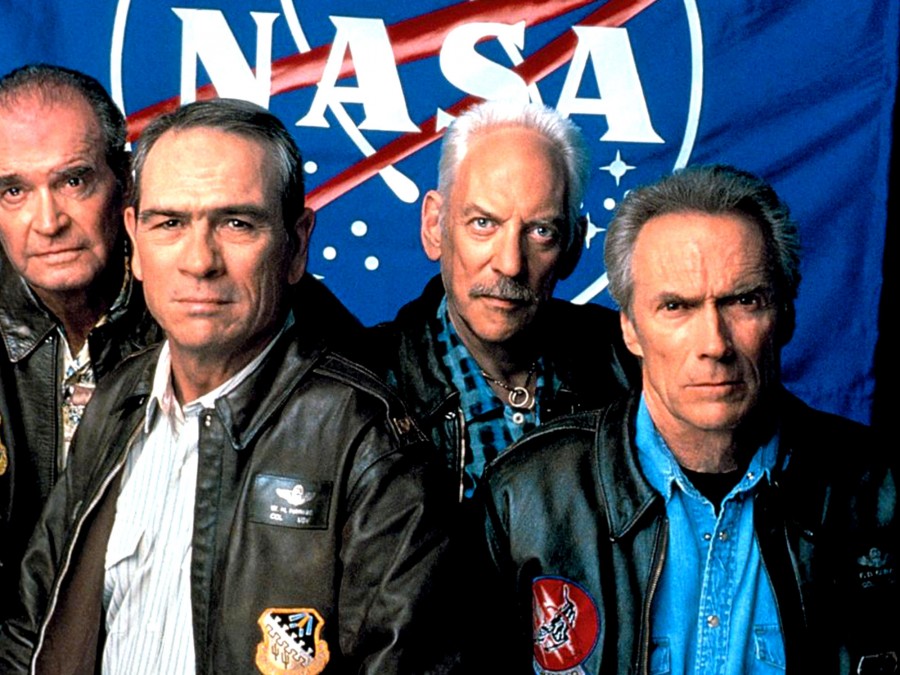
You know that noise you make – that ‘ahhh’ – when you slide into the bath? That’s Space Cowboys. Except in this case the bath is a warm haze of narrative certainty and the satisfied sound is a thousand cornball moments harmonising into a perfect sine wave of met expectations. This treacly, cask-aged tale sees four geriastronaut buddies finally getting an unlikely opportunity to become zero-Geezers. It offered audiences a welcome chance to see Clint emerge from a decade marked by serious, sober and downright grim projects, and fun it up with Tommy Lee Jones, James Garner and Donald ‘Duck Soup’ Sutherland. The result is a genial, formulaic delight. ALD
Mad, Shutter Island-level plotting, without any of the mitigating psychotropic twisteroos, makes Absolute Power one of the most insanely concocted and properly pulpy entry in Clint’s directorial canon, and that includes The Eiger Sanction. Cat burglars, US presidents, cuckolded billionaires and S&M nooky are the jumping off points for a high-stakes, low-brow Hitchcock roundelay of disguises, blackmail, suicides and Laura Linney being thrown over a cliff (yay!). And while it’s never as taut, compact or heady (or balls-to-the-wall silly) as it needs to be to truly distinguish itself, Absolute Power does at least enjoy a drive and an energy that sets it apart from similar flaccid genre pieces that Eastwood was churning out around this time. ALD
Type ‘The Eiger Sanction’ into YouTube and among the trailers, dubbed Polish versions and this questing video review by “actor, writer and sometime Hollywood insider” Dan ‘Spike’ Harville, the first hits you get are ‘Racism in Hollywood’, a reference to the film’s convivial approach to race relations, and ‘Eiger Sanction Insanity’, which covers its attitudes to rape (good), sexism (fine) and homosexuals (oh dear). Clint certainly seems to be aiming for his core demographic of Angry White American Dads with this one, indulging them with all sorts of sexy shenanigans with air hostesses, assassinations, albino Nazis and mountain-high adventure. Interestingly, the author of the book the script was based on (a would-be libertarian godhead known only as ‘Trevanian’) claimed his novel was actually a James Bond spoof – something that would seem to have slipped Clint’s attention even though his character is an art smuggler/daredevil mountaineer/sexual Olympian/famed assassin named Dr Jonathan Hemlock. ALD
What happened off screen between Clint and his one-time beau Sondra Locke is the stuff of tawdry tabloid legend. What needs to be said, however, is that she remains one of his greatest collaborators and foils: perfect as the frou-frou trust fund nightmare in Bronco Billy; scintillating as a conflicted country chanteuse in Every Which Way But Loose; and a film stealer as the rock-hard call girl-cum-mob squealer in 1977’s cross-country bullet ballet, The Gauntlet. Clint himself plays a cop who, of course, always gets his man, but also likes a snifter of sweet sherry at the end of shift. What should be a routine escort mission turns into a lunatic, heavy-artillery manhunt when the combined might of the Nevada and Arizona police forces comes down on them with a mandate from on high. The mis-matched couple storyline is rote but not without charm, and the climactic sequence from which the film receives its name is so over the top that it feels like one of the director’s few pointed incursions into the surreal. DJ
Or, White Saviour, Black Car. Another bewildering runaway success for a very, very average film, Clint’s NIMBY hymn to the erosion of traditional picket-fence values would be easier to take if everything wasn’t so damned dull. Working from a plodding script by the writer of Let’s Bowl (The People’s Court but, y’know – with bowling) and Factory Accident Sex, Clint offers us a one-dimensional world in which every scene plays out exactly how you expect it to and every character – Clint’s grasping, bourgeois children, his ineffectual, pasty-faced Irish priest, his crazy neighbour – is no more than a hasty thumbnail sketch. Granted the film looks splendid, but the way cinematographer Tom Stern (Eastwood’s go-to guy since 2002) captures the naturalistic chill of fading, failing suburban Detroit, is often at odds with the more cartoony elements of the plot. ALD
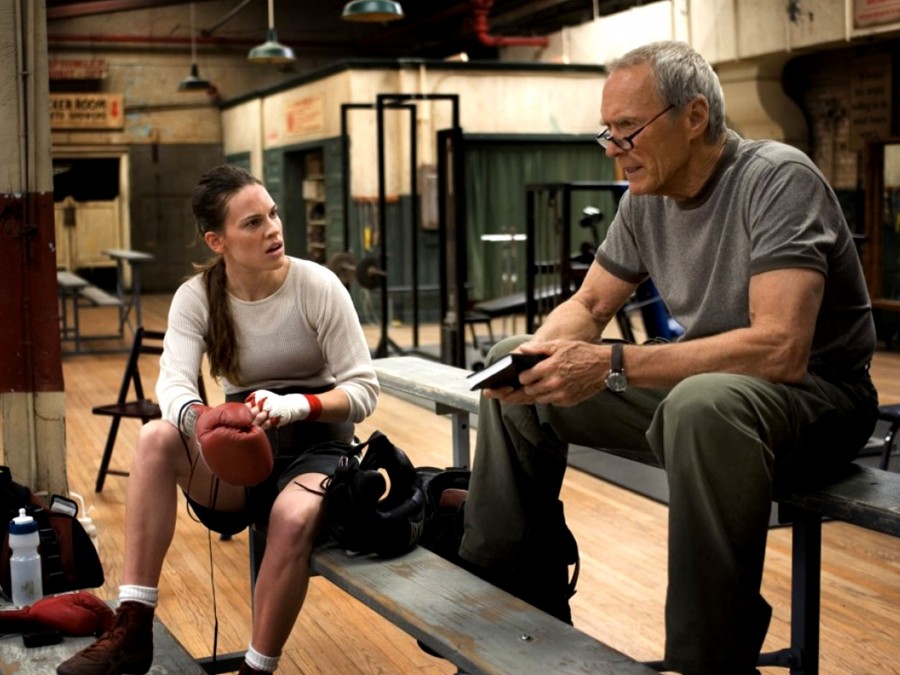
Is Clint’s foxy boxing parable, as its many ardent defenders contend, a rich, emotionally demanding, handsomely mounted prestige picture about the price and value of the American Dream that will forever rank among the very best sports movies ever made? Or is it, as saner minds have challenged, a hackneyed throwback to mawkish, hand-wringing ’50s pugilistic pictchahs that’s devoid of charm, is terminally depressing, relies on shamelessly telegraphed plotting and mercilessly manipulates its audience into weeping, biddable submission again and again and again? You can’t argue with the huge box-office numbers, but most of that haul came off the back of the warm, burnished glow of an Oscar win over such hall-of-famers as The Aviator, Ray and Finding Neverland. Would the film have been a hit without that industry nod? It probably doesn’t matter, but there’s definitely something peculiar and oddly polarising about this beloved, baffling film. ALD
Jersey Boys is the sort of film a director makes in order to top up the kids’ college fund, or maybe to pay for a pagoda upgrade. Whatever impulse was behind Clint accepting this glossy director-for-hire gig, it must be said that Jersey Boys is a better film than the (purported) context of its creation would imply. Sure, he doesn’t immediately seem like the right man for the job of transposing an endearing, nostalgic, lighthearted stage musical to the big screen. Yet in telling the story of close-harmony matinee idols, Frankie Valli and the Four Seasons, he focuses on the hardscrabble lives of working class artists ducking and weaving for that big break. The film is also a critique of ephemeral art and how hard it is for people to be immortalised in their own time. DJ
FOOF (as it was referred to on set) is, of course, umbilically linked to its sister film Letters from Iwo Jima but they could – and this is a compliment – have been directed by two different people. Whereas Iwo Jima is a lean, precise look at the battle for this strategically vital lump of volcanic rock from the Japanese perspective, this US-centric take on the conflict is a far flabbier affair. It chronicles the battle and follows the soldiers involved in the famous flag-raising photograph that was taken on the island as they struggle to deal with the heroic stature (and statue) foisted upon them back home. But it would take a director blessed with far more freewheelin’ flair than Eastwood has been allotted to blend or counterpoint the carnage of war with the near-farcical position in which these boys find themselves. And while there’s much to enjoy, most notably Adam Beach’s searing performance as Ira Hayes, the film just doesn’t come together. ALD
It’s strange that a film so classically structured and so beloved by US awards bodies could now seem like a moody outlier within Clint’s vaunted directorial oeuvre. A ripping yarn coupled with a forensic character study, a clutch of performances the size of a fleet of flaming zeppelins, and a nice Big Twist to talk about down the pub, the film tells of three childhood chums who go on to have a major falling out in later life. As in Honkytonk Man, Eastwood’s film is about how youth is a great social and economic leveller, and it’s only in later life, when family and responsibility become vital constituents of the daily grind, that the fault-lines begin to show. Adapted from a novel by Dennis Lahane, perhaps the most impressive aspect of this baroque, South Boston-set saga is how little its literary source is felt. Eastwood always prizes chilly atmospherics over a duty towards plot mechanics. And extra marks for getting Sean Penn to wear a burgundy, floor-length leather jacket. Baddass move, Clint. DJ
Clint takes his young son Kyle under his ragged wing on a rambling tour of the Southern states of the US, playing a Hank Williams-like country troubadour out to seek his fortune. This low-slung study of the difference between building a legacy and transferring it on to future generations makes for one of the director’s most poignant and thoughtful works. Eastwood uses the father-son dynamic to give his tragic hero, Red Stovall, a sense of drive, as he tirelessly contends to secure a spot on the playbill of the Grand Ole Opry and, thus, a precious dose of infamy. Yet the spectre of his tuberculosis constantly hovers – making the film less about achieving personal dreams, and more about doing something extraordinary in order to give the life of his young son some meaning. DJ
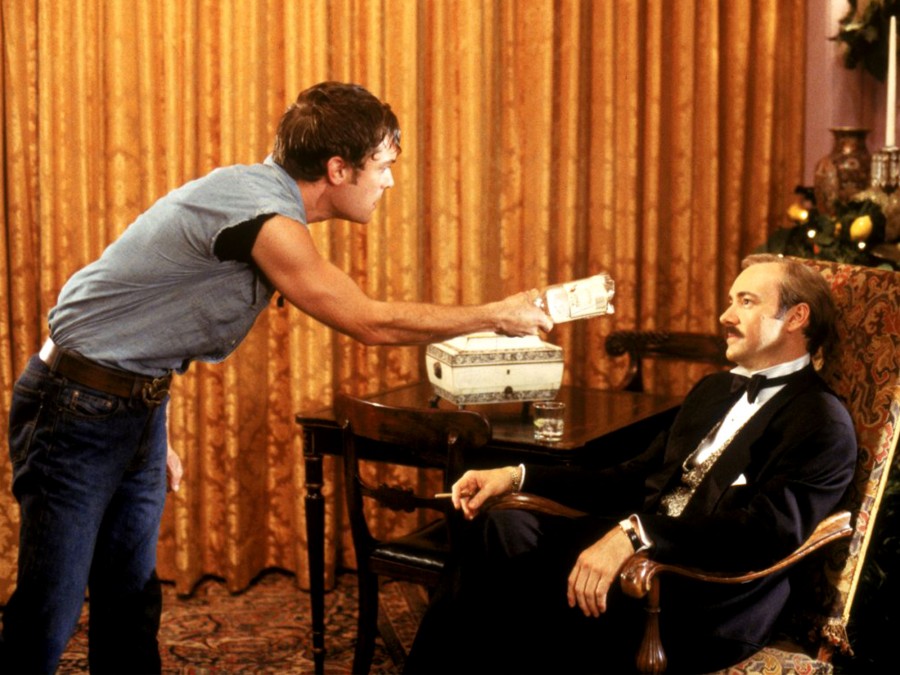
A weird and lovely film, maybe too weird and too lovely to fully accept that it was made by career hard man, Clint Eastwood. John Berendt wrote a bestselling book based on his interactions with Savannah, Georgia’s foremost antique dealer, bon vivant and homosexual, Jim Williams (Kevin Spacey), whose annual Christmas shindig is interrupted by an unfortunate murder. John Kelso (John Cusack) is the slicked-back journo commissioned to cover the case, but the film simply charts how he falls in in love with the town and its people (despite not entirely agreeing with some of their more shifty, face-saving traditions). It’s a supremely preceptive and poetic take on the American south, presenting ingrained bigotry as a weakness that can be fixed rather than a perma-rot at the core of society. Final shout out to film-stealer Lady Chablis, the snap-talking drag artist who plays herself and who sadly passed away in September of 2016. DJ
“And I looked, and behold a pale horse: and his name that sat on him was Death, and, I have to say, he was an awful lot like the chap from High Plains Drifter.” Yes, there are unmissable similarities between Pale Rider and Clint’s loopy, rapey 1973 Weird West classic (and of both to Shane), but when you allow for the fact that this was the first big-budget western released by a major studio since the stupendous folly/devastating flop/overambitious failure that was Heaven’s Gate, tried and tested was maybe the way to go. But while Pale Rider sticks to familiar western themes and structure, it is very much its own film. Clint’s trim, frigid performance chimes perfectly with his longtime cinematographer Bruce Surtees’s brittle, wintry photography and the climactic shootout is effortlessly simple, uncommonly savage and properly seminal. (UK readers are invited to check out the film’s trailer, which is for some reason scored to the theme music from Channel 4 News.) ALD
1990 was something of an annus craptacticus for Eastwood that saw him dance the one-for-them-one-for-you mambo to little effect. While buddy-cop slate-filler The Rookie (see above – a long way above) turned a tidy profit, it garnered some of the most withering reviews of Eastwood’s career. WHBH sees those variables reversed, with critics swooning, even as the film failed to find an audience of any kind. To be fair, a film about an alcoholic ’50s film director going to Africa in order to try and shoot an elephant was alway going to be a tough sell. Films about Hollywood have never gone over too well at the box-office, and the unfamiliar location, period setting and lack of action left Clint’s audience (ie American multiplexers) feeling like they’d maybe give this one a miss. A shame, as this is an unusual and subtly moving film that trades on notions of its star’s titanic machismo to produce one of Clint’s best, most conflicted performances. ALD
It’s hard to re-watch Clint’s 1971 directorial debut feature now without smirking a little. And that might have something to do with the casting of actor Jessica Walter, who modern audiences will likely know best as machiavellian dowager Lucille Bluth in sublime TV sitcom Arrested Development. Indeed, the sociopathic tendencies displayed by her character in Misty does make for an interesting connection between these two very different properties. The film came out in the same year as Don Siegel’s The Beguiled, though Misty is perhaps a more straight-shooting version of a coiled romantic obsession that inevitably erupts into violence. Or is it just a Crazy Lady thriller in which Clint has to resort to fisticuffs and mansplaining to reclaim his personal boundaries? Maybe. But it’s exceptionally well made, using the setting of the director’s own quaint hometown, Carmel-by-the-Sea, to chilling effect, and even making time for its DJ hero to take a groovy little stroll around the Monterey Jazz Festival. DJ
Otherwise known as the film in which you get to see Clint force both a smile and salt tears. Dialling back the sludgy mawkishness of Robert James Waller’s ripe bestseller, Eastwood and screenwriter Richard LaGravenese produce something that’s so classical, so straightforward, so militant in its unapologetic nailing of every emotional beat, that you just can’t help but be lured in. As displaced, lonely Iowan homemaker Francesca, Meryl Streep brings one of the director’s most complex and fully-developed female characters to life. While her husband and children are off at the state fair, a doe-eyed meet cute with Clint’s itinerant photographer and silver-haired hunk (in town to capture the eponymous bridges on film) leads to a love affair that burns fast and bright. There’s no concession to pacing, no unnecessary short-cuts, no funny stuff – everything here is just as it needs to be. The harrowing climactic sequence in which Francesca has to choose between her man and her lover, remains one of the most immaculately choreographed in the director’s hallowed corpus. DJ
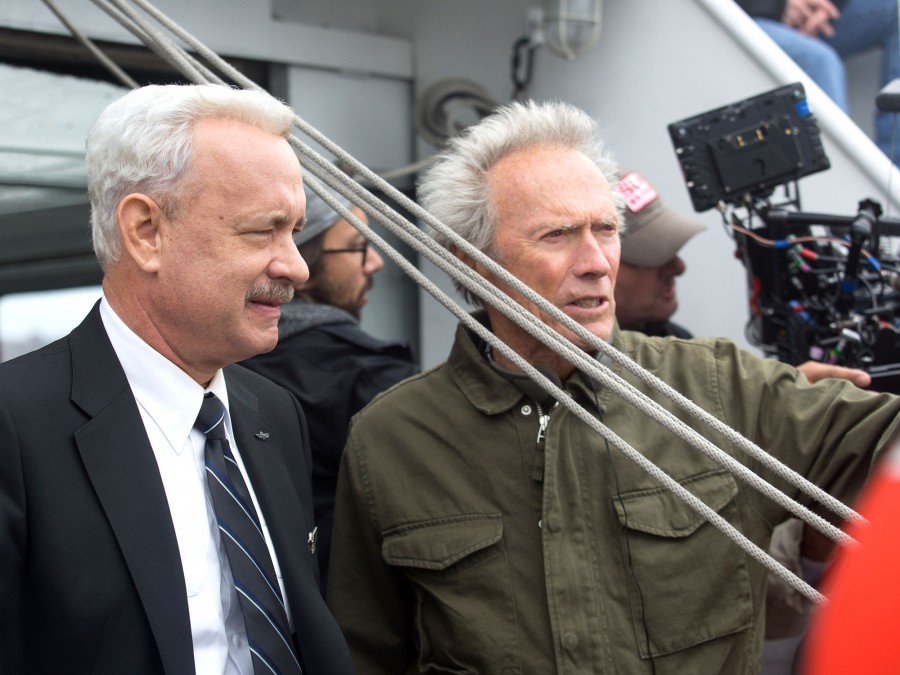
Okay, so we haven’t allowed very long for the dust to settle on this one prior to slotting it right in the upper reaches of the Clint pantheon. But Sully, the director’s extremely cool-headed and philosophical take on that fateful, freezing day in January 2009 when a bird attack busted both engines on US Airlines flight 1549, leaving Chesley “Sully” Sullenberger to perform an emergency landing on the Hudson River, is one of his very best. Far from forensically recreating the drama of the spectacle itself, Eastwood’s film is about the heavy burden of heroism, much like American Sniper. The crash itself is rendered as a frightening echo in Sully’s memory as his status as a national hero means he’s forced to relive the incident over and over. It’s a beautiful, elegiac and exactingly measured film, gifted with an astounding central performance by Tom Hanks which isn’t just a superficial recreation of Sully – he really gets under the subject’s thick skin. DJ
Less is most definitely more in this case. Whereas Flags of Our Fathers featured massive beach landings, hordes of extras and lashings of (dubious) special effects, Letters from Iwo Jima benefits from a far more streamlined approach. While the American soldiers were all well-fed and chock-full o’ beans, their Japanese counterparts were in hell’s ditch, despairingly low on supplies and lacking air and naval support. Eastwood captures their dread of the impending battle perfectly, his stark photography draining the colour from their faces and finding shadows even in the midday glare. Where the film truly comes alive however is with the introduction of General Kuribayashi, dispatched from Tokyo to lick these slackers into shape. In the wrong hands this pivotal character would have been just another a barking dog, but as played by Ken Watanabe he is a kind, jovial funster with a fondness for Johnnie Walker whisky. His casting proves to be the film’s true masterstroke. ALD
Everyone knows that the biopic is the lowliest form of filmmaking. The exception that proves the rule is Clint Eastwood’s dazzlingly depressing take on the curtailed life and times of skag-happy jazz pioneer Charlie “Yardbird” Parker. Forest Whitaker has seldom bettered his lead turn as the rakish beatnik who treats his creditors, lovers and band-mates with none of the love he saves for his trusty sax. Every expression is freighted with remorse and confusion, his waggish repartee never more than a front for the dull, inexorable ache of his various addictions. The focus is on minor episodes. There are no attempts made to contrive a grand dramatic sweep. As a portrait of flawed genius, maybe Eastwood saw more than just a personal hero in his damaged, self-lacerating subject. And yet, as so often with the director, the film achieves greatness through its subtle concessions to objectivity and its suppression of hyperbole: it would seem to be, among other things, one of the great films about chemical dependency, presenting it as a necessary, non-preventable evil at the time that Ronald Reagan’s “War on Drugs” raged in the streets. DJ
There was nothing about American Sniper that suggested it would become one of Clint’s most critically lauded and commercially successful movies. But that’s exactly what happened. Bradley Cooper absolutely smashes it as Navy SEAL sniper Chris Kyle, a man who treats warfare as a kind of delicate bureaucratic task, worrying about his job and his personal safety while leaving any wider moral ramifications to either the pencil-pushers or the sissies. The film quickly became a cause celebre, enshrined as a darling of the pro-gun lobby while also being accepted by the loony left as a cool admonishment of firearms and the negative psychological impact they can have on their users. Indeed, Clint’s mastery with this film was to just cut back anything that could be construed as a political jibe, throwing every nuance out to the think piece cat-house to fight over. And they did. DJ
A partner film to Honkytonk Man in many ways, A Perfect World is also about a man who has a date with destiny and his desperate, last ditch attempt to find salvation in youth. Kevin Costner, channeling Clint’s brusque, smart-ass demeanour with stone-faced aplomb, carries the film as Butch, an escaped nice-guy crim in 1960s Texas. A muffed up carjacking leads to a kidnapping, and suddenly Butch has a surrogate son, Buzz (TJ Lowther), as a wingman in his attempt to reach his estranged pops in Alaska. But instead of treating the boy like a bargaining chip, the convicted killer builds a world of makebelieve, often jeopardising his mission to teach Buzz a moral lesson, or to allow him a treat once denied him by his strict religious upbringing. If the film has a downside it’s Eastwood’s attempts at counterbalancing his own supremely Zen sheriff with a female foil. God bless Laura Dern, but her character here feels completely token. Otherwise, this is a melancholic, almost Steinbeckian survey of America and its lovably misbegotten male populous. DJ
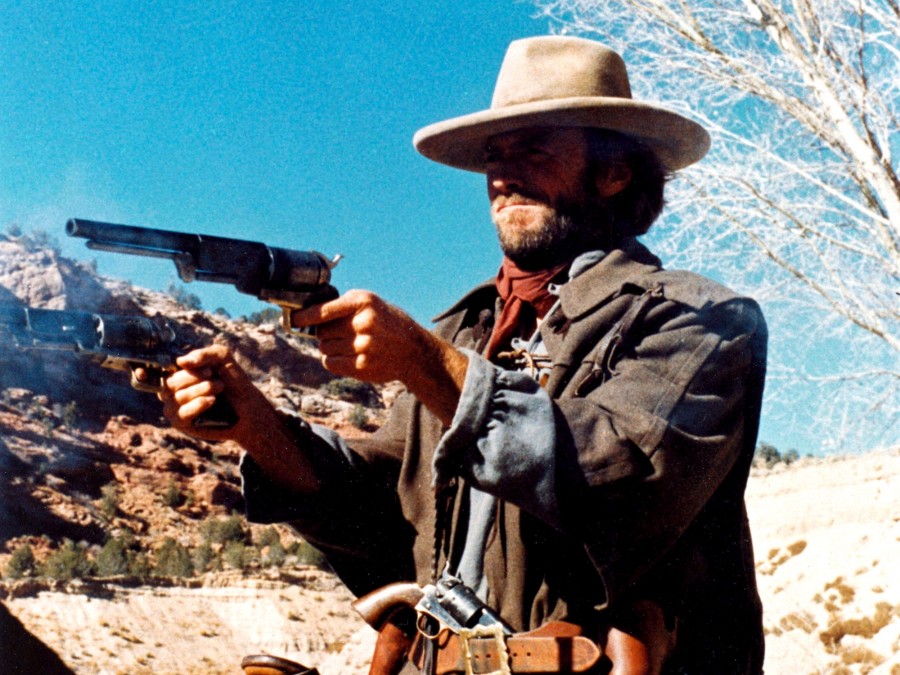
It may not be one of Clint’s most defining films or iconic roles, but The Outlaw Josey Wales certainly boasts his most epic character. Like Keyser Soze, Robin Hood or Ned Kelly, Josey is a folk hero, a legend, a boogeyman (notice how often Wales’ face is in shadow). His name is synonymous with slaughter, lawlessness and the swift and deadly blaze of his Colt Walker pistols. But Josey has lost his taste for war and now simply wants to settle down. With the US emerging from the bruising years of Vietnam, it’s easy to see why such peacenik themes touched a nerve, and the film was a huge box office success. Or maybe such high-minded talk counts for nothing and audiences were rather swept away by the muscular plotting, literate script, wicked zingers and thunderous gunplay of a funny, stirring and beautifully woven film that charts Wales’s journey from revenge-crazed blackguard to mythical shootist to log-cabin kibbutzer. It’s a masterful thing, and is perhaps the most out-and-out enjoyable film in the Eastwood canon. ALD
Yes, it may reek a little of snobbishness, to take one of Clint’s lesser known directorial efforts and plant it smack-dab in his all-time top five, but Breezy is a dusty jewel of a movie. Similar (and, we think, superior) to the irritating, inter-generational quirk-bomb that is Harold and Maude, Clint’s film tells of a bed-hopping beatnik played by Kay Lenz and her slow, steady and utterly charming relationship with an older, starched-shirt divorcee played by William Holden. In the press of late, Clint has lambasted what he believes to be a be a generation of pampered, politically correct pussies, but a film like Breezy, which is so affirmative about the notion of peaceful co-existence and accepting primal impulses, you can’t help but think that it’s all just stealth marketing for Sully. DJ
The Human Centipede and Nicolas Cage’s Wicker Man performance aside, there’s nothing more disconcerting in cinema than when a western goes truly, deeply, madly off-message. No other genre is as strictured and codified as the oater, meaning that when they stray from the well-beaten trail things get gloriously discombobulating. Say hello to High Plains Drifter. People (men) of a certain age will have first seen the this errant bastard of a film on late-night TV (note to younger readers: in the ’70s and ’80s TV companies used to routinely show brill/weirdo films after the late-evening news. Enjoy your YouTube clip-shows and body-shaming docs!) where it will have no doubt twisted many a tiny melon. Totally kinky, psychedelically violent and worryingly rapey, High Plains Drifter distills every deviant lesson Eastwood learned from his Spaghettified tutelage under Sergio Leone into an overwhelmingly strange and completely unforgettable take on the genre that retains the capacity to disturb to this day. ALD
There’s been no shortage of great movies which might be described as “post westerns”. That is, stories about shit-kicking cowboys – grizzled gods of the frontier – who have suddenly found themselves twirling their pistol in the dust cloud of progress. What makes 1980’s Bronco Billy such a strange and bittersweet fruit is that it offers a warm celebration of cowboy mythos, but is also primarily a celebration of movies and their ability to change lives. Clint himself essays the self-styled “fastest gun in the west”, an irrepressible big top has-been tramping across America in the hope that he and his rag-tag troupe will uncover like-minded souls, those who still treasure the campfire romanticism of life on the range. It’s perhaps Eastwood’s shaggiest film, but also his most self-reflexive. It ambivalently depicts the evolution of the American identity (and the American cinema) during the 1980s, but also shows a director who is utterly at ease with the notion of being a man out of time. DJ
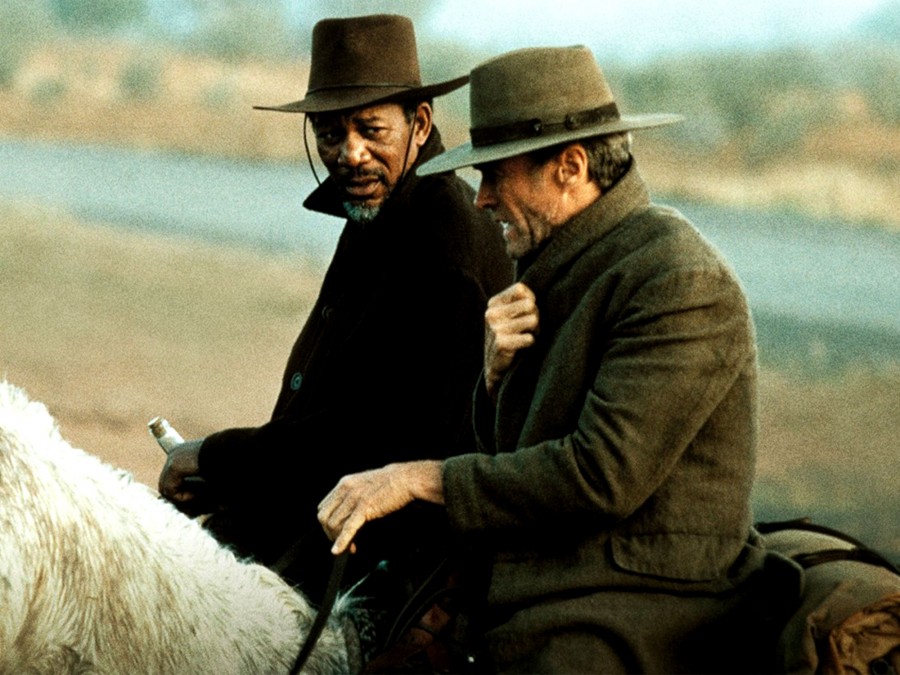
There is a single shot in Unforgiven that stands as one of the most electrifying moments in all of cinema. It features no gunplay, doesn’t involve a stunning vista or depend on a killer line, but centres on a shrewish Jewish reporter doing next to nothing. WW Beauchamp (Saul Rubinek, perhaps best known as Daphne’s lawyer boyfriend in hoity-toity US sitcom Frasier) originally came west to document and romanticise the exploits of loquacious, haughty gunslinger English Bob – the Duke of Death, played with greasy majesty by Richard Harris – only to see him exposed as a coward and a fraud by Little Bill Daggett (Gene Hackman), sheriff of Big Whiskey, Wyoming. Daggett is brutal, mean and dangerous. He has been to the places and done the things and is keen to dispel Beauchamp’s dime-store novel view of cowpokes, gunfights and mythic badmen. He is also a blowhard and – though he’d deny it – an egotist, happy to correct the stories Beauchamp has collected and equally happy to reposition himself at the dark heart of them. Beauchamp sees through him but is still impressed. Enter a real bad man.
“You’ll be William Munny, outta Missouri. Killer of women and children.”
“That’s right.”
Clint’s camera goes low, dollying in on Beauchamp as he slowly rises, breathless, to witness Munny (Eastwood, naturally) shoot Little Bill. To witness a moment of pure west unfold in real time. Eastwood’s entire western legacy has led up to this seemingly throwaway, one-second shot. Beauchamp has finally found the real thing and it is dirty, ordinary, ignoble and lucky. Gone are all of Clint’s former affectations – the Man with No Name’s cheroot and poncho combo, Josey Wales’ mammoth six-guns, High Plains Drifter’s tin of paint. He has stripped the western hero to his core and Beauchamp is his witness. The violence that follows is mechanical, hateful and ugly. Is this what we, like Beauchamp, have been waiting for out there in the dark? Is this what we want? You do, Eastwood seems to say. And you really, really don’t.
Unforgiven is routinely referred to as a revisionist western. And it is that, but it is also much more. This is where the myth of the west dies. WW Beauchamp was there to see it, and so were we. Clint has said that he will never make another western. He doesn’t need to. Nobody does. ALD
What’s your all-time favourite movie directed by Clint Eastwood? Let us know @LWLies
Published 19 Sep 2016
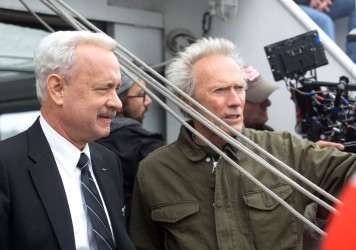
The director has recruited Tom Hanks for this dramatisation of a US Airways pilot’s Hudson River heroics.
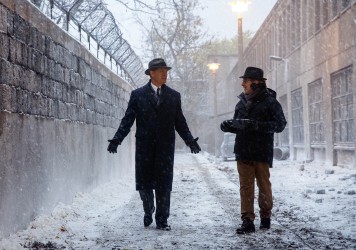
We take stock of the (almost) complete oeuvre of one of modern cinema’s true masters.
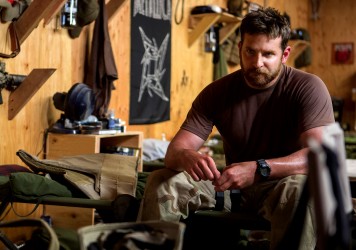
By Keith Uhlich
A beardy Bradley Cooper proves his mettle in this true story about the most lethal sniper in US military history.